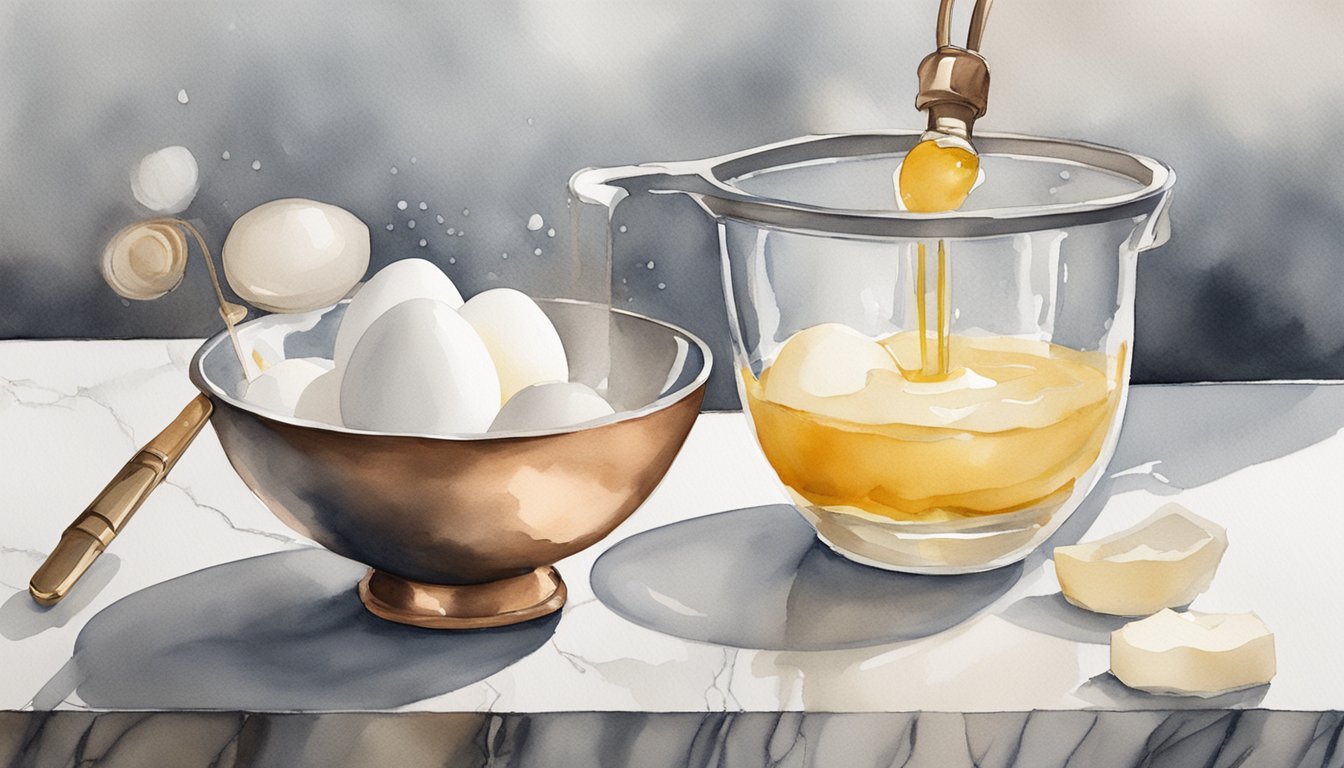Egg Whites 101
Egg whites are a versatile ingredient rich in proteins and low in calories, making them a staple in various dietary and culinary practices. They are notably free of cholesterol and low in fat, which contributes to their popularity in health-conscious cooking.
Nutritional Profile
Egg whites are purely composed of protein and water, making them a high-quality, low-calorie source of protein. They contain no saturated fat or cholesterol. Here’s a brief overview of the nutritional content in a single large egg white:
- Protein: 4 grams
- Fat: 0 grams
- Calories: 17
- Cholesterol: 0 milligrams
- Sodium: 55 milligrams
Although egg whites lack many of the nutrients found in the whole egg, they do offer small amounts of potassium, selenium, and sodium.
Health Benefits
Consuming egg whites can support muscle maintenance and repair due to their high protein content. They are often recommended for individuals looking to manage their weight or prevent conditions related to high cholesterol and fat intake. Egg whites also provide essential nutrients for maintaining bone health, such as calcium and vitamin D.
Culinary Uses
Egg whites have a unique ability to foam and trap air, which is crucial for making meringues, soufflés, and angel food cakes. They are also used to add structure to cocktails and can be cooked on their own as a lower-calorie, lower-fat alternative to whole eggs.
Safe Handling and Storage
Egg whites must be kept refrigerated to prevent bacterial growth. They should be stored separately from the yolks and can be kept in the refrigerator for up to four days. Pasteurized egg whites are also available and are a safer choice when consuming them raw or undercooked.
Preparing and Cooking with Egg Whites

In culinary practices, egg whites are renowned for their versatility and play a crucial role in various dishes, ranging from fluffy meringues to hearty frittatas. Proper preparation and cooking techniques enhance their texture and expand their use in both sweet and savory recipes.
Separating Egg Whites
To separate egg whites, a cook might crack a whole egg and transfer the yolk between shell halves, letting the white fall into a bowl. Alternatively, one could crack the egg into their palm and allow the white to seep through slightly parted fingers, holding onto the yolk. Ensuring that no yolk or shell residue contaminates the whites is key, as fats can prevent them from achieving the desired foam in recipes.
Whipping Techniques
Effective whipping of egg whites incorporates air, which is vital for creating a stable foam. Starting with cold eggs can make the separation easier, but room temperature whites achieve greater volume when whipped. Utilizing a clean whisk or an electric mixer can expedite the process. Addition of an acid, like cream of tartar, stabilizes the foam, enhancing the structure and creating peaks ideal for meringues or baked goods.
Egg White Recipes
Egg whites contribute significantly to the structure and texture of many dishes. For a lean protein breakfast, one might consider a scrambled egg white with spinach and herbs. In sweet culinary arts, egg whites are fundamental in making French macarons, where they provide a glossy, moist interior. Whether crafting a savory frittata or a sweet pavlova, egg whites prove to be a dynamic ingredient.
Tips for Perfect Egg Whites
To secure perfect egg whites for cooking, use a silicone spatula to gently fold them into recipes to maintain their fluffy texture. Cooks should ensure utensils are grease-free, as even a small amount of fats or egg yolks can hinder foaming. Also, integrating egg whites at the correct temperatures is important—gentle heat for scrambles to prevent rubberiness, and precise oven temperatures for baking to ensure proper rise and structure.

